Putting Civility Back into Civil Discourse
- News & Events
- News
- Putting Civility Back into Civil Discourse
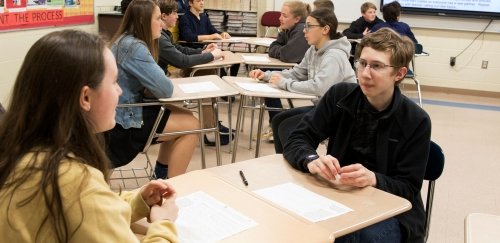
Civil discourse is a skill that seems to be in decline in our current political climate
Alumna Kristin Hayes-Leite, a social studies teacher at Narragansett High School, is training her students in civil discourse by helping them find common ground.
“I think we make a lot of assumptions about people because they belong to a certain political party or vote a certain way or support a certain personality or watch a certain news channel. If we can look beyond political parties and personalities, if we can get beyond the labels and look at values, I think we would find commonalities,” said Hayes-Leite, M.A.T. ’01, M.Ed. ’10.
Her protocol for finding common ground consists of first preparing her students intellectually to engage in an interchange by learning the U.S. Constitution and the nature of their democracy. They then research a range of controversial topics from abortion to border security and decide where they stand on these issues. When they do discuss one of the topics with each other, they’re not allowed to disagree with one another. Instead they are to find a commonality between their two beliefs, even if they have completely opposing views.
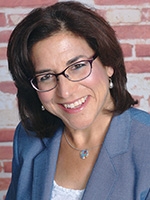
A large circle is formed consisting of pairs of students facing each other. The first student expresses their stance on an issue while the second student actively listens.
The first student might say, “I think it’s appropriate for NFL players to protest by taking a knee because the right to protest is a First Amendment right.” The second student would then state, “What I heard you say…” and repeat what they heard.
The point, Hayes-Leite said, is to learn to listen without judgment, to listen in order to understand. She asks the listeners to give nonverbal cues to show that they are listening, such as maintaining eye contact and nodding. The person who has the floor is asked not to speak to persuade but to express a view.
“The final step is for both students to find common ground – something they can both agree on,” said Hayes-Leite. “While they may disagree on taking a knee at an NFL game, they may agree on the right to protest.”
Hayes-Leite emphasized that in Common Ground, the process is more important than winning someone over to your side. If students can learn to express their views without fear of attack, and if they can learn to actively listen to a viewpoint that is not their own, then the discourse has been a success.
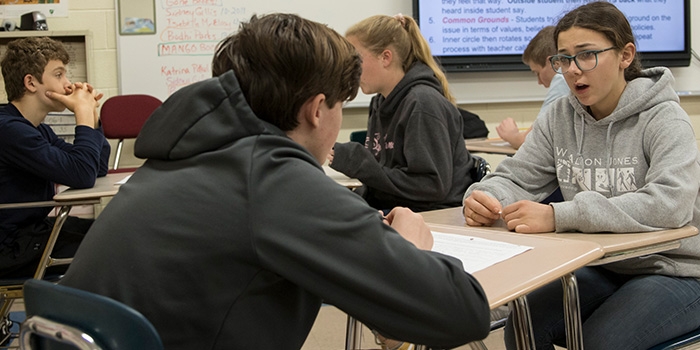
RIC Assistant Professor of Psychology Traci Weinstein noted that this protocol is a form of social/emotional learning.
“Social/emotional learning was largely developed for K-12 students but has huge psychological benefits for everyone,” she said. “It incorporates critical thinking skills, such as the ability to be objective, and it teaches you how to manage your emotions and to empathize with others. Social/emotional learning is a muscle that everyone should build early and exercise regularly.”
Weinstein teaches social/emotional learning in her college courses at Rhode Island College. She noted, how people in our country are struggling with this skill. “They live in their own political or social bubbles and don’t know how to listen – or simply don’t want to listen – to anyone outside that bubble,” she said.
An antidote would be to learn from people who are different from you. “The more interaction you have outside your own group,” she said, “the more you’ll be able to expand your thinking.”
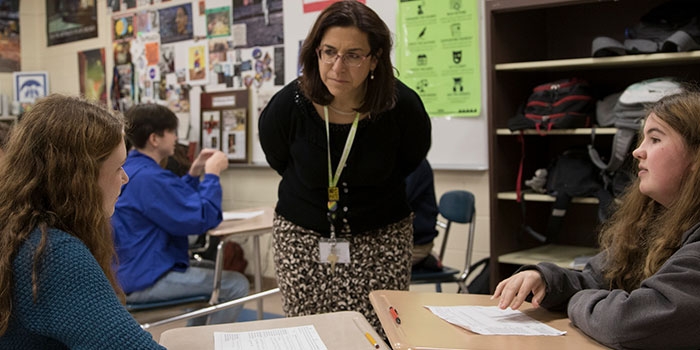
Last year RIC alumna Mia Palombo ’18 engaged in student-teaching in Hayes-Leite’s class. This year she is a full-time social studies teacher in her own classroom at Blackstone Valley Prep Academy, a middle school. In her class she teaches her students the importance of working through conflict by thoroughly understanding both sides of an issue. They do this through role play. This year she asked her students to research a religion different from their own and then to pair up with a classmate and share that religion with their partner.
“Most of my students have a Christian background,” she said, “however, I also have a few Muslim students and I had a Hindu student earlier in the year. So a student who is, say, Christian and believes in one God had to take on the role of a Hindu who believes in many gods. The students shared how their religions differed and what their two religions had in common. Both Hindu and Christian discovered that they both believed in one God above all other gods.”
Palombo’s capstone project for her students will be to examine current conflicts between Christians, Muslims and Jews in the Middle East. “The idea is that you don’t know someone until you’ve walked a mile in their shoes, until you’ve looked at how they see the world,” Palombo said.
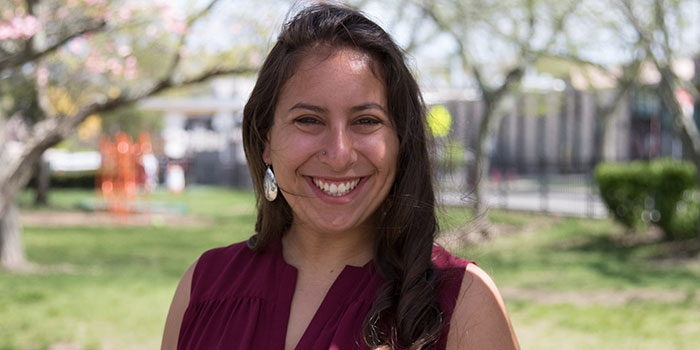
“I want my students to be global citizens, not just citizens of our state or citizens of our nation. I want them to be citizens of the world. In this day and age, we are so globally connected that everything that happens in another country will, in some way, affect their lives. My goal is to open their eyes to what’s happening around the world and to supply them with the tools they’ll need to solve the issues of the future,” she said.
Hopefully, with the help of these teachers, tomorrow's leaders will not only be well-informed, they will have entirely different rules of engagement in resolving conflict. Communication will be unimpeded by vast differences for they will have recognized that we have far more in common than we think.
